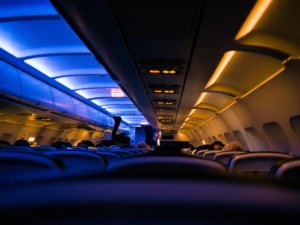
Studies by the International Air Transport Association have concluded that there is a low incidence of inflight COVID-19 transmission. According to the IATA, an updated tally of published cases (in October) showed that, since the start of 2020, there had been 44 cases of COVID-19 reported in which transmission was thought to have been associated with a flight journey. This included confirmed, probable and potential cases, while during the period under review a total of 1.2 billion passengers had travelled.
“The risk of a passenger contracting COVID-19 while onboard appears very low,” said IATA medical advisor Dr. David Powell. “That’s one case for every 27 million travellers. We recognise that this may be an underestimate but, even if 90 per cent of the cases were un-reported, it would be one case for every 2.7 million travellers. We think these figures are extremely reassuring. Furthermore, the vast majority of published cases occurred before the wearing of face coverings inflight became widespread.”
The IATA reported that new insight into why the numbers were so low had come from a joint publication by Airbus, Boeing and Embraer of separate computational fluid dynamics (CFD) research conducted by each manufacturer in their aircraft.
“While methodologies differed slightly, each detailed simulation confirmed that aircraft airflow systems do control the movement of particles in the cabin, limiting the spread of viruses.”
Data from separate simulations reportedly yielded similar results…
“Aircraft airflow systems, High Efficiency Particulate Air (HEPA) filters, the natural barrier of the seatback, the downward flow of air, and high rates of air exchange efficiently reduce the risk of disease transmission on board in normal times.
“The addition of mask-wearing amid pandemic concerns adds a further and significant extra layer of protection, which makes being seated in close proximity in an aircraft cabin safer than most other indoor environments.”
Layered Preventive Measures
Mask-wearing on board was recommended by IATA in June, and became a common requirement on most airlines following the publication and implementation of “Takeoff Guidance” by the International Civil Aviation Organisation (ICAO).
“ICAO’s comprehensive guidance for safe air travel amid the COVID-19 crisis relies on multiple layers of protection, which involve the airports as well as the aircraft,” said Powell.
“Mask-wearing is one of the most visible. But managed queuing, contactless processing, reduced movement in the cabin and simplified onboard services are among the multiple measures the aviation industry is taking to keep flying safe. And this is on top of the fact that airflow systems are designed to avoid the spread of disease with high air flow rates and air exchange rates, and highly effective filtration of any recycled air.”
He noted that aircraft design characteristics added a further layer of protection contributing to the low incidence of inflight transmission. These include:
- Limited face-to-face interactions as passengers face forward and move about very little.
- The effect of the seat-back acting as a physical barrier to air movement from one row to another.
- The minimisation of forward-aft flow of air, with a segmented flow design which is directed generally downward from ceiling to floor.
- The high rate of fresh air coming into the cabin. Air is exchanged 20-30 times per hour on board most aircraft, which compares very favorably with the average office space (average two to three times per hour) or schools (average 10-15 times per hour).
- The use of HEPA filters which have a more than 99.9 per cent bacteria/virus removal efficiency rate, ensuring that the air supply entering the cabin is not a pathway for introducing microbes.
Alicante-Elche Airport has maintained its status during the coronavirus pandemic as one of Spain’s busiest airport, and a key hub for travellers seeking safe travel options that link major centres around Spain, the UK and elsewhere in Europe. Click here for up-to-date flight and airline information.
